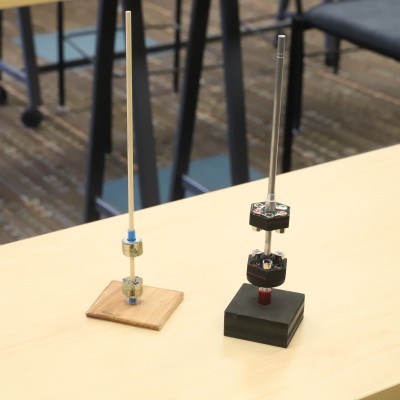College of Western Idaho (CWI) Adjunct Faculty, Dr. Ray Walsh, is making waves in the world of chemistry inside and outside the classroom. His research has earned a couple of national recognitions, including top prize at the American Academy of Physics Teacher’s (AAPT) Apparatus Competition and a publication in Physics Education Journal.
For a decade, Walsh has been researching the structure of the atomic nucleus. The basis of Walsh’s research is to understand the construction of atomic nuclei, along with quarks like up and down and quarks with opposite and unequal charges. In 2019, he created a model of the atomic nucleus, the Magnetic Coulomb Barrier, and patented it.
The Magnetic Coulomb Barrier provides a visual and hands-on demonstration of the central challenge of nuclear fusion to overcome the electrostatic forces inherent in the Coulomb barrier. With the model, students can directly determine the kinetic energy required to surpass the magnetic potential energy barrier.
“A great deal of force and energy is required to push the two magnet arrays together, but when sufficient force is applied, they fuse together,” said Walsh. “This apparatus is a big deal because fusion holds the promise of clean and abundant energy, but there's currently no available classroom model to teach this fascinating concept.”
Walsh submitted his interactive nuclear model to the worldwide AAPT Apparatus Competition which earned him first place on July 16. The competition looks for new, unpublished ideas or improvements to old ideas that can aid classroom teaching.
His first place at the competition is not the only reason for Walsh to celebrate. His work was recently published in the Physics Education Journal to share with a larger audience his research and findings.
Walsh's goal is to eventually get the Magnetic Coulomb Barrier in classrooms to help make the concept of fusion accessible to everybody and excite students about its potential to solve future energy problems.
“While I am not a nuclear physicist myself, I believe that difficult concepts like fusion can be taught effectively through representational models.”







